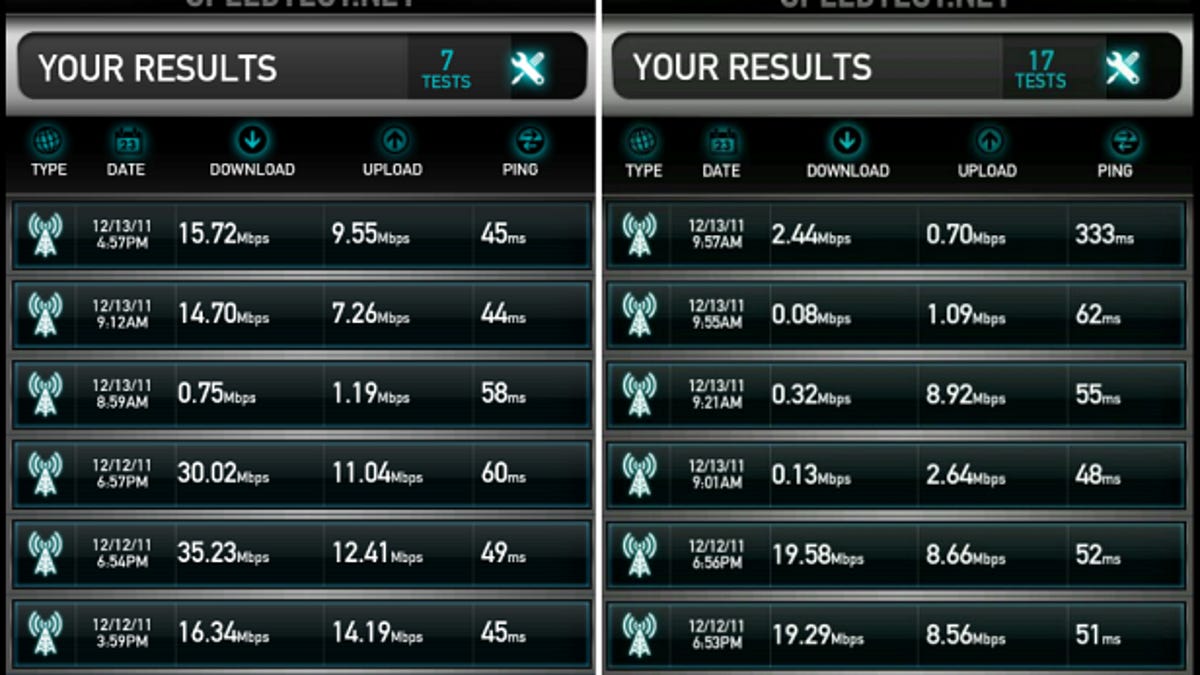Up close with AT&T's 4G LTE speeds in San Francisco
It's been several days since AT&T's 4G network has been spotted in cities where the faster network hasn't even been officially launched.
The AT&T 4G LTE speeds guessing game is unofficially over. Late last week we began hearing reports of the LTE icon popping up in the notification bars of AT&T's three compatible smartphones--the Samsung Galaxy S II Skyrocket, HTC Vivid, and LG Nitro HD.
So, I fired up Ookla's Speedtest.net app to test diagnostics (for ping, download, and upload speeds) on two compatible phones we have in-house, the Nitro HD and the Vivid.
What speed sampling would be complete without caveats? Since the LTE network is a soft-launch and nothing official or necessarily widespread, since the app scores are not the final word in real-world performance, and since this is not intended to be a scrutinized comparison between AT&T and any other network, consider the Speedtest.net results a diagnostic suggestion, with more in-depth testing to come after AT&T cuts the red ribbon on LTE.
With that said, the speeds look promising at their fastest, mostly sticking to the 14 or 15Mbps range for downloads, with spikes into the 30Mbps range and a rock-bottom outlier of just 0.75Mbps.
The Vivid, on the other hand, was less consistent in these preliminary speed trials. It hit highs in the 17-to-19Mbps download range, but also hit road blocks, completing downloads at a rate of 0-to-2Mbps, which is extremely slow.
Still, with both phones' initial results taken together, signs point to LTE as a significantly faster 4G service in San Francisco--at least in areas where signal is unobstructed and strong. AT&T's ability to sustain LTE speeds is yet to be seen in these new markets, especially as AT&T continues building out its network.
Of course, we're still waiting for AT&T to officially flip the switch and fully support LTE in uncovered regions, like the San Francisco Bay Area, Los Angeles, and New York (which should officially get it by the year's end).
Until then, if you're lucky enough to get a taste of a twice-as-fast network, consider yourself among the lucky.
And if you're not, hold on a little longer. LTE is on the way.


